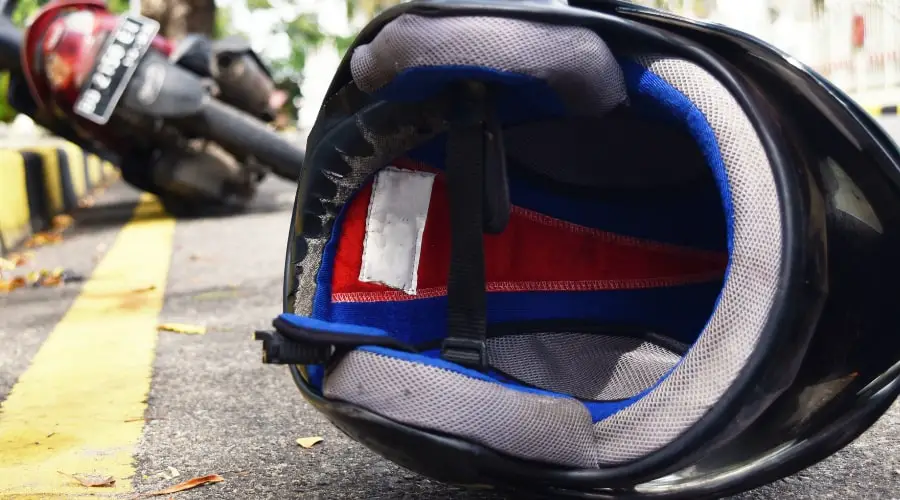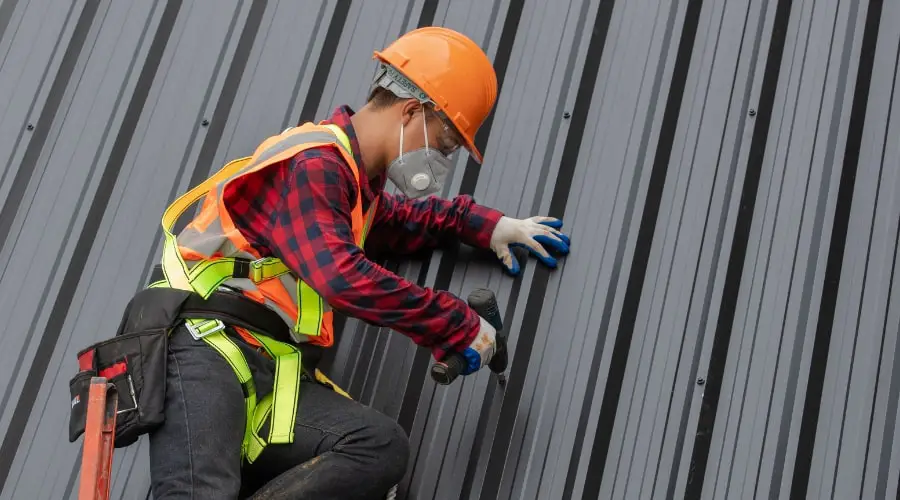When it comes to riding motorcycles, safety is of utmost importance. One of the vital safety measures is wearing a helmet that protects your head from potential injuries in case of an accident.
However, not all helmets are equal, and some are legally prohibited. This article will explore various types of helmets, factors affecting their legality, and which helmets are not allowed. So, let’s dive in!

Types of Helmets
Various types of helmets are available in the market, each designed to cater to different riding styles and preferences. Here are some of the most common helmet types:
Full Face Helmets
Full-face helmets provide the most comprehensive protection, covering the entire head, face, and chin. They are the preferred choice for sports riders and those seeking maximum safety.
Open Face Helmets
Also known as 3/4 helmets, open-face helmets cover the head’s top, sides, and back but leave the face exposed. They are popular among cruiser and scooter riders who prefer a more relaxed and open riding experience.
Modular Helmets
Modular helmets, or flip-up helmets, combine the features of full-face and open-face helmets. They have a hinged chin bar that can be flipped up, providing the convenience of an open-face helmet when needed.
Half Helmets
Half helmets, also known as “shorty” helmets, only cover the top half of the head. They provide minimal protection and are generally not recommended for high-speed riding or long-distance trips.
Off-Road Helmets
Off-road helmets, motocross helmets, are designed for off-road riding and racing. They have an elongated chin bar and visor to protect the rider from debris, mud, and sun glare.
Factors Affecting Helmet Legality
Several factors can impact the legality of a helmet. Here are some of the most critical considerations:
Helmet Certification
In many countries, helmets must meet specific safety standards and obtain certification from recognized organizations, such as the Department of Transportation (DOT) in the United States, the Economic Commission for Europe (ECE) in Europe, or the Snell Memorial Foundation. These certifications ensure that the helmet has been tested and proven to provide adequate protection.
Age and Condition of the Helmet
Helmets degrade over time, and their protective capabilities can be compromised. Most manufacturers recommend replacing a helmet every five years or immediately after a significant impact. Wearing an old or damaged helmet may not be allowed by law.
Helmet Modification
Altering a helmet, such as adding unauthorized accessories, painting, or drilling holes, can compromise its safety and render it illegal. Always follow the manufacturer’s guidelines for helmet modifications and only use approved accessories.
Non-Compliant Helmets: Which Helmets Are Not Allowed?
Some helmets are not allowed due to their inability to provide adequate protection and other factors. These include:
Novelty Helmets
Novelty helmets are primarily designed for style rather than safety. They often lack proper padding, impact resistance, and certification. Such helmets are not allowed in most jurisdictions, as they do not meet safety standards.
Non-Certified Helmets
Helmets that do not carry a certification from a recognized organization are not allowed in many countries. Without certification, there is no assurance that the helmet meets safety requirements and can provide adequate protection.
Helmets with Prohibited Accessories
Some accessories, such as tinted visors or helmet-mounted cameras, might be prohibited in certain jurisdictions due to safety concerns or potential distractions. Using helmets with these prohibited accessories may not be allowed.
Damaged or Modified Helmets
As mentioned earlier, damaged helmets, have exceeded their lifespan, or have been improperly modified are not allowed. These helmets can no longer provide the necessary protection and may pose a risk to the rider.
Importance of Wearing a Proper Helmet
Wearing a proper, legal helmet is crucial for several reasons:
Accident Prevention
A well-fitted, high-quality helmet can help reduce wind noise and improve visibility, allowing you to focus on the road and avoid potential accidents.
Reducing Head Injury Risk
Helmets are designed to absorb and distribute the impact force during a crash, reducing the risk of head injuries, which can be life-threatening or cause long-term disabilities.
Legal Consequences
In some jurisdictions, wearing a non-compliant helmet may result in fines, penalties, or even license suspension. It is essential to ensure that your helmet meets the legal requirements of your location.

Choosing the Right Helmet
To ensure you are wearing a legal and safe helmet, consider the following tips:
Know Your Head Size and Shape
Helmets come in various sizes and shapes. Measure your head circumference and compare it with the manufacturer’s sizing chart to find the right fit. Remember that helmets should fit snugly but comfortably.
Look for Certification Labels
Check for certification labels from recognized organizations, such as DOT, ECE, or Snell. These labels indicate that the helmet meets the necessary safety standards.
Evaluate Helmet Features
Consider additional features, such as ventilation, comfort padding, and visor type, to ensure that the helmet meets your needs and preferences.
Test the Fit
Try on the helmet before purchasing. Make sure it fits snugly, does not move around, and does not cause any discomfort. Remember, a well-fitted helmet is crucial for your safety.
Frequently Asked Questions:
Q1: How do I know if my helmet is certified?
A1: Look for certification labels from recognized organizations, such as DOT, ECE, or Snell, usually found on the back or inside of the helmet. These labels indicate that the helmet has met the necessary safety standards.
Q2: Can I wear a helmet with a tinted visor?
A2: Tinted visors may be prohibited in some jurisdictions due to safety concerns, particularly during nighttime riding. It is essential to check local regulations and consider a helmet with a clear visor or a drop-down sun visor for versatility.
Q3: Are half helmets allowed?
A3: Half helmets are allowed in some jurisdictions, provided they meet the necessary safety certifications. However, they offer minimal protection compared to full-face or modular helmets, and their use may not be advisable for high-speed riding or long trips.
Q4: Can I paint my helmet?
A4: Painting a helmet can damage its protective capabilities, as some paint solvents can weaken the shell material. If you wish to customize your helmet, consult the manufacturer’s guidelines or choose a helmet with a custom paint job from a reputable source.
Q5: How often should I replace my helmet?
A5: Most helmet manufacturers recommend replacing your helmet every five years or immediately after a significant impact. Helmets degrade over time, and their protective capabilities can be compromised, so it is crucial to replace them regularly.
Conclusion
Wearing a fitting helmet is about complying with the law and ensuring your safety on the road. Non-compliant helmets, such as novelty helmets, non-certified helmets, and those with prohibited accessories or modifications, are not allowed and pose significant risks.
When choosing a helmet, consider certification labels, proper fit, and necessary features. Doing so can protect yourself from head injuries and avoid legal consequences while enjoying your ride.
Helmetslab is a website that focuses on providing in-depth reviews and information about different types of helmets, including motorcycle helmets and others helmets. I am writing a post with proper research on the info that helps helmet users.
